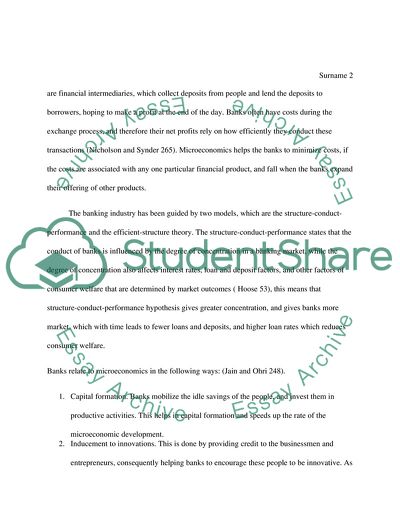How microeconomics relates to the banking industry Research Paper. https://studentshare.org/macro-microeconomics/1790950-how-microeconomics-relates-to-the-banking-industry
How Microeconomics Relates to the Banking Industry Research Paper. https://studentshare.org/macro-microeconomics/1790950-how-microeconomics-relates-to-the-banking-industry.


